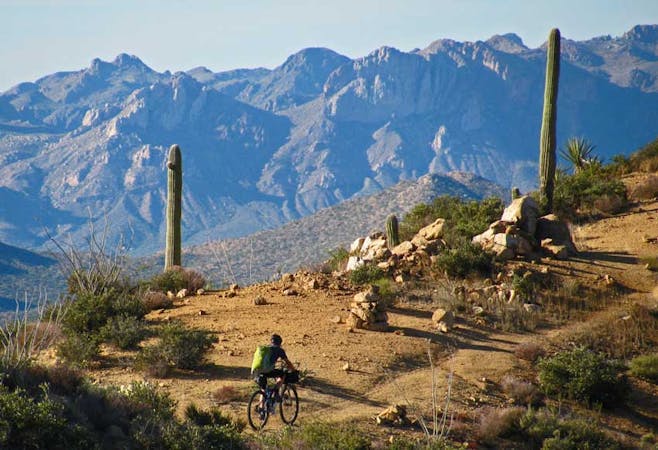
23 routes · Mountain Biking · Hiking

A long, slow descent toward Utah.
Mountain Biking Difficult

One of Arizona’s least visited natural wonders lies hidden on the Kaibab Plateau north of Grand Canyon National Park. Along the Arizona Trail between Grand Canyon and the Utah state line you’ll discover outstanding singletrack, phenomenal views, and beautiful forests and meadows that seldom see human visitors. This area is only accessible between May and November as winter can bury the entire plateau in snow for over half the year.
This was the first segment of Arizona Trail to be designated in the 1980s and remains one of the most significant portions of trail in the state. After four days of riding you’ll understand why. While the first two days include rolling terrain at high elevation, the last two are mostly downhill. The highpoint of this ride on Day 1 is above 9,150 ft. and the lowpoint on day 4 is at 5,000 feet. Riders of all ability levels will appreciate this AZT Expedition, including beginners who don’t mind sucking a little wind at altitude.
Day Three
Today begins the long, slow descent toward Utah. You’ll lose 1,200 feet over 14 miles across pleasant terrain. Porcupines and peregrine falcons have been seen here, and the only time you’ll have to get off your bike will be to hop over trees that have fallen over the past few months. It’s an opportunity to pedal, coast, smile, and repeat. The day ends near the tiny town of Jacob Lake, famous for its cookies baked fresh daily. Deer outnumber people here 1,000 to 1, and since mountain lions like deer you can count on sharing the forest with a few big cats. Although you’ll probably never see them, look for scat and tracks on the trail. Ride length is 17 miles.
For more information and to book a tour, visit: http://aztexpeditions.com/portfolio/grand-canyon-to-utah.html
Difficult
Mostly stable trail tread with some variability featuring larger and more unavoidable obstacles that may include, but not be limited to: bigger stones, roots, steps, and narrow curves. Compared to lower intermediate, technical difficulty is more advanced and grades of slopes are steeper. Ideal for upper intermediate riders.

23 routes · Mountain Biking · Hiking